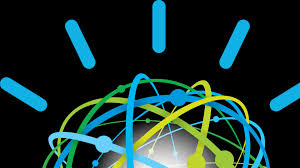Source: itnews.com.au NSW Health Pathology relied on its investment in API-led connectivity over the past four years to rapidly build out “world-class” public facing services in response to the coronavirus pandemic. Enterprise architect Tim Eckersley told the MuleSoft CONNECT digital summit last week the agency was able to move with speed in the early stages Read More
Tag: Microservices

Source: containerjournal.com SAP, at its SAPPHIRE NOW Converge online conference, announced it has further unified its Business Technology Platform around a set of curated microservices from SAP and third-party partners that IT organizations can mix and match to their needs. Gunther Rothermel, president of the SAP Cloud Platform, says SAP is on a journey toward migrating away from monolithic Read More

Source: searchcloudsecurity.techtarget.com Microservices offer tremendous flexibility to developers, adding speed and versatility to the application development process and thus enabling developers to focus their time more closely on business logic instead of the underlying application plumbing. However, the approach is not without its tradeoffs. One major challenge to deploying and managing a microservices architecture is Read More

Source: diginomica.com Most companies aren’t adopting modern software development approaches such as microservices architectures without compelling business reasons for doing so — to accelerate time to market, gain greater agility to respond to emerging opportunities, and deliver differentiated experiences that grow the customer base, customer lifetime value, and market share. Modern software development is good Read More

Source: containerjournal.com Cloudera today announced that it plans to make an instance of its data management platform based on Hadoop generally available this summer on Red Hat OpenShift, which is based on Kubernetes. Arun Murthy, chief product officer for Cloudera, says Cloudera Data Platform (CDP) Private Cloud is a complement to the instances of the platform Read More

Source: helpnetsecurity.com Software intelligence company Dynatrace announced it has extended its advanced observability capabilities to cloud and data center environments running on the Linux ARM platform. These enhancements to Dynatrace reflect increasing demand from enterprise IT teams for containers and microservices, as well as their growing adoption of ARM-based servers as an efficient and cost-effective platform for Read More

Source: containerjournal.com Snapt has made generally available its Nova application delivery controller (ADC) for Kubernetes clusters, which combines a local and global load balancer, web accelerator and web application firewall (WAF) in a single platform. Company CTO Dave Blakey says Nova 2.0 is a hosted instance of an ADC service designed from the ground up to enable Read More

Source: bitboycrypto.com Ethereum might be the second most valued cryptocurrency, but its platform certainly is the first option when it comes to Decentralized Applications (DApps) development. Even in a market that has seen newer platform such as EOS, TRON, Hedera, and Hyperledger, Etheriums has consistently occupied the first place as the dominant force when it Read More

Source: As developers, the prospect of working for a big company might bring about feelings of oppression, rather than opportunity. Envisaging endless team syncs, pointless meetings and processes wrapped up in bureaucracy inside a set of procedures. It’s easy to imagine why some are put off. For many though, the fear comes from the thought Read More

Source: cointelegraph.com The ongoing global COVID-19 pandemic has upended businesses around the world, forcing companies to retool their organizations to weather one of the worst disruptions to the global economy in decades. In the face of unpredictability, both decentralization in the workplace and system architectures have taken center stage as methods to combat ever-changing circumstances. While each Read More

Source: zdnet.com The idea behind microservices and a microservices architecture is relatively simple: hide all the complexities of hardware, operating systems, and different development toolkits behind a standard ‘service’ that is available on a network. Perhaps the simplest way to illustrate this is with an example. If you click this link, you’ll access Zippopotamus, an open Read More

Source: analyticsinsight.net As Information Technology (IT) complexity grows and the use of AI technologies expand, enterprises are looking to bring in the power of AI to transform how they develop, deploy and operate their IT. IBM is has recently launched a broad range of new AI-powered capabilities and services to help CIOs automate various aspects of IT development, infrastructure Read More

Source: ciodive.com By now, the benefits of a cloud-based model are well documented, highlighting the potential for flexibility, agility and an augmented cost structure. More lamentation is overkill. The next sign of industry maturity is not acceptance — it’s technique. Each cloud implementation requires a tailored approach, accounting for business needs and objectives. And that can vary Read More

source: lightreading.com In this user-centric era, the update periods of software applications determine the pace at which user experience is improved. A/B testing that started in the Internet industry can deliver application updates to users in small, quick steps, allowing users to enjoy new features in no time. In the last five to six years, Read More

Source: devops.com As opposed to a traditional monolith, microservices architecture can theoretically bring many benefits. Microservices decouple software elements, enable reusable components and allow independent development cycles. However, in practice, microservices are prone to many issues. For example, teams accustomed to a traditional monolithic build process may find it difficult to reshape their established practices. Furthermore, Read More

Source: containerjournal.com Trilio this week announced it is making available a platform for protecting Kubernetes environments dubbed TrilioVault for Kubernetes under an early access program. At the same time, Trilio announced TrilioVault for Kubernetes has been certified for Red Hat OpenShift, an application development and deployment platform based on Kubernetes. Previewed at the recent KubeCon + CloudNativeCon 2019 Read More

Source: venturebeat.com A push to reinvent the way developers create applications for the internet has gathered significant momentum, catching even some of its most ardent supporters by surprise. But even as the popularity of infrastructure based on the Kubernetes platform and microservices surges, the adoption has inevitably brought to light the massive challenges big businesses Read More

Source: searchapparchitecture.techtarget.com When assembled correctly, a microservice architecture gives applications interoperation between various services, possibly hosted across different platforms. For microservices, security must be top of mind, since there’s no way to contain users as in a monolithic application. Instead of simply allowing upfront access to a microservices-based application, development teams need to also secure Read More
Source: searchapparchitecture.techtarget.com When assembled correctly, a microservice architecture gives applications interoperation between various services, possibly hosted across different platforms. For microservices, security must be top of mind, since there’s no way to contain users as in a monolithic application. Instead of simply allowing upfront access to a microservices-based application, development teams need to also secure Read More

Source: computerweekly.com When Dean Keeling joined Green Flag as managing director three years ago, top of his to-do list was transforming the business and setting it on a trajectory to become the UK’s number one roadside recovery and rescue organisation. The firm is the UK’s third biggest roadside recovery firm, behind the AA and RAC, Read More

Source: it-online.co.za Software AG has unveiled webMethods AppMesh, a configurable control plane for microservices, APIs and service mesh.Built as an extension of Software AG’s industry-leading webMethods API Management Platform, webMethods AppMesh adds application context to service mesh, which provides better agility, management and governance of microservices as business apps. Designed to plug in to any Read More

Source: containerjournal.com Kubernetes, in many ways, has allowed software organizations to realize the benefits of microservices by providing a convenient and powerful abstraction for deploying, scaling and running distributed software systems. Those benefits, however, have come at a cost for traditional software operations. Indeed, as microservices have grown in complexity and scale, teams have often Read More
Source: searchapparchitecture.techtarget.com When user demand hits unexpected and sustained highs, an application’s scalability and fault tolerance are put to the test. Architects are learning that lesson even quicker as the COVID-19 pandemic pushes demand for distributed applications, forcing them to make big decisions about how they manage availability. Microservices enable more efficient scaling than monolithic app Read More

Source: forbes.com A decade ago, when everyone was still wrapping their heads around the idea of cloud computing, one ongoing point of concern was the fear of vendor lock-in. The idea was that if you relied on a single company to provide all of your cloud services from top to bottom, you would be locked Read More

Source: A microservices architecture — as the name implies — is a complex coalition of code, databases, application functions and programming logic spread across servers and platforms. Certain fundamental components of a microservices architecture bring all these entities together cohesively across a distributed system. In this article, we review five key components of microservices architecture Read More

Source: enterpriseai.new The list of open source service meshes, a low-latency infrastructure layer designed to link application containers and other microservices, continues to grow as ephemeral application infrastructure scales to production. The latest offering comes from Solo.io, which this week released its “service mesh hub” to the open source community. The hub is billed as Read More

Source: consultancy.asia Digital and business transformation consultancy R/GA has launched an innovative ‘Lean Experience Stack’ offering in the Asia Pacific – designed to enable clients to create best-in-class digital experiences with lower investment costs, mitigated risk, and a speedier time to market. The new service will be led by R/GA’s APAC Executive Technology Director Anthony Baker, a Read More

Source: devprojournal.com Microservices architecture adoption has moved beyond use in the largest of cloud enterprises to applications of all sizes. Whether you are an early adopter – or you’re just now weighing your options — Kyle Davis, Head of Developer Advocacy, and Loris Cro, Developer Advocacy Manager at Redis Labs, authors of Redis Microservices for Dummies, share their Read More

Source: searchsecurity.techtarget.com Security professionals have probably noticed that containers, such as Docker and Rkt, as well as container orchestration — for example, Kubernetes — are gaining traction in a big way. This is because, as developers have discovered the power of microservices, they are moving away from monolithic or tightly coupled component design architectures and Read More

Source: siliconangle.com This week, throngs of cloud-native computing fans were set to descend on Amsterdam for KubeCon, the Cloud Native Computing Foundation’s conference for all things Kubernetes. Alas, like so many other conferences, the CNCF decided to postpone KubeCon. But that doesn’t mean I can’t still write about the highlights of the show in this article. Read More
